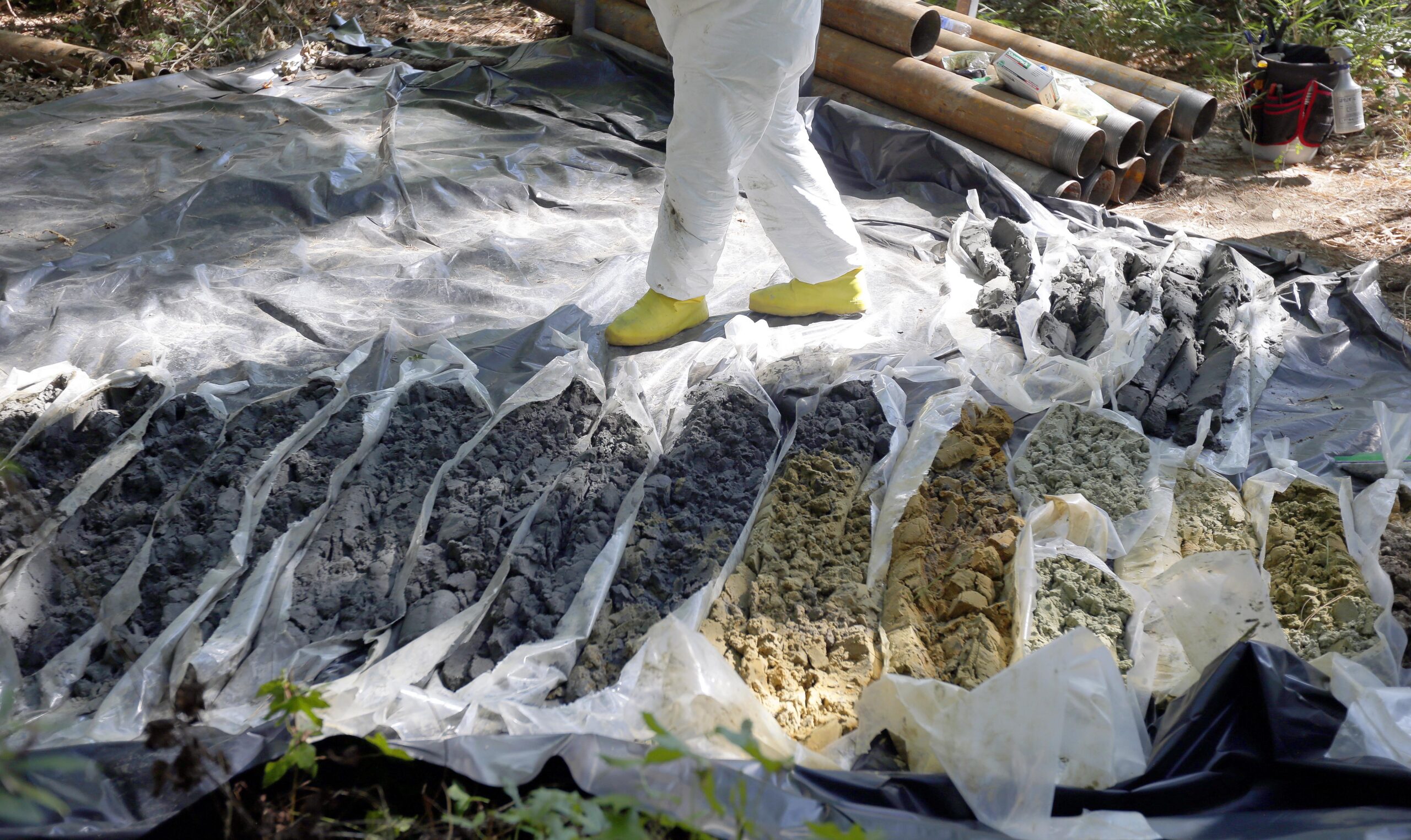EPA officials urge patience, participation with Westside lead cleanup

Soil samples are collected at a Superfund site in Navassa, N.C., in 2015. EPA officials say they have completed cleanup of 94 properties at the Superfund site within Atlanta’s Westside. More than 200 properties still require remediation.
Gerry Broome / AP Photo
Officials with the U.S. Environmental Protection Agency say they’re completing lead cleanup on about five properties a month on Atlanta’s Westside.
They’re asking residents of the English Avenue and Vine City neighborhoods to be patient with the massive effort to remediate 2,100 lots suspected to have high and unsafe levels of lead.
“Please bear with us as we work through the process and as we try and get to everybody as fast as we can,” said the EPA’s on-scene coordinator Chuck Berry during an online community forum Thursday night. “For some lots, it really may be quite some number of months or a year before we get to you.”
Berry says, so far, the EPA has completed cleanup at 94 properties at the Superfund site. With more than 200 properties still requiring remediation—and hundreds of more to test—he estimates the entire process could take years.
One significant barrier could extend that timeline: absentee property owners not responding to the EPA’s requests to test for lead on their property.
Leigh Lattimore, who’s helping run the cleanup for the EPA, asked residents to give the agency the access it needs to do testing and cleanup—and to push their neighbors to do so too.
“If you have neighbors that have not gotten their property sampled, please please please encourage them to,” she said. “We’re going to be here, and we really need to gain access.”
EPA has gotten permission to access fewer than half the properties in its targeted cleanup area.
The agency does have legal pathways to test and clean up lots even without an owner’s permission. Officials said Thursday they hope robust community outreach can help them avoid having to use those options.
Earlier this year, the EPA expanded the size of the Superfund site to include nearly all of the neighborhoods of English Avenue and Vine City.
As the scope of the contamination and need for cleanup has grown, the agency is now proposing to add what it calls the Westside Lead Site to its National Priorities List, which would open up more opportunities for funding and community engagement. Thursday evening’s public meeting was part of the process to add the site to that list.
Lead is dangerous for children. It can damage their brains, affect their development and have longer-term health effects into adulthood.
The lead contamination in the Westside was found by Emory University researchers working with community members a couple of years ago. Officials believe the lead is from old industrial sites.
The EPA has been testing the soil in people’s yards. When the levels are high enough, the agency removes and replaces the dirt in those yards, and covers all the costs.
As of last month, the agency reported that 2,097 properties required testing. Out of those, the EPA had been given permission to test the soil at 840 properties. Lead levels were high enough to require cleanup at 311 of those.








